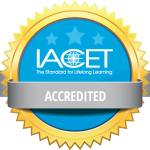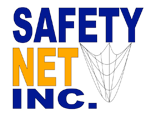Safety Net Inc is in process of becoming am IACET approved training provider. All training providers associated with Safety Training in New York City must embrace this higher level of training credentials.
Some of the advantages of IACET include more qualified trainers, better facilities, more consistent training, better recording keeping, clear learning objectives, and the ability to obtain CEUs. This has allowed Safety Net Inc’s already very high standards to be better solidified in standard procedure.
Learning Objectives:
Students an employers are provided with clear learning objectives of training provided by Safety Net Inc. A brief sample of learning objectives related to two of Safety Net Inc’s most popular courses can be seen below:
16hr Suspended Scaffold:
After completing this course learners will able to:
· Recognize hazards associated with suspended scaffolds,
· Implement hazard correction and mitigation procedures, means and methods.
· Identify NYC DOB laws and OSHA regulations regarding suspended scaffolds as well as comply with these laws.
· Use correct procedure to inspect suspended scaffold equipment.
· Correctly use and operate suspended scaffold motor including emergency controls.
· Correctly install, operate, and tie off rope scaffold using back hitch and night hitch.
· Correctly install a vertical lifeline. Tie and use required rigging knots.
· Recognize load ratings for suspended scaffold and calculate weights of materials so as not to overload the scaffold.
· Implement inspection criteria for wire rope.
· Correctly name and recognize different pieces of rigging hardware including shackles, fist grips, turnbuckles, etc.
· Correctly use and install rigging hardware, Including C-hooks, parapet clamps, and outrigger beam systems.
· Identify paperwork that must be kept at the job site including, plans (CD-5), log books, checklist, etc.
· Use inspection checklist to inspect scaffold equipment.
· Implement hazardous weather preparation procedures.
· Wear, doff, adjust, use, inspect, and care for personal fall arrest system equipment correctly.
· Employ correct emergency response procedures and employ self rescue techniques to protect against suspension trauma.
CEU’s Criteria & Process Notice:
To Obtain CEUs as part of the training process, students must meet the following minimum requirements for each course they are requesting CEUs:
If you have any questions or comments regarding any classes or processes please feel free to contact Timothy Vogler directly via this website, phone at 347-604-2121, or email at Tim@safetynettrainer.com.


